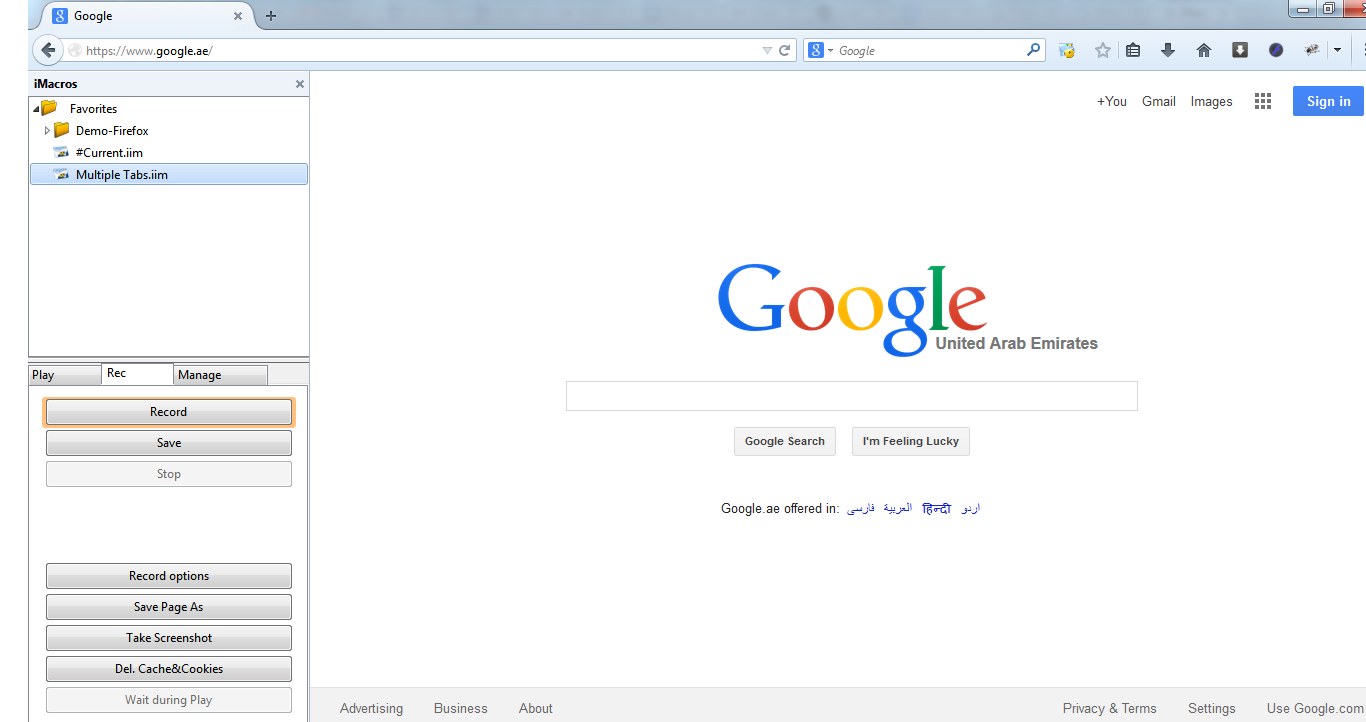 iMacros from IPSwitch is a piece of software that allows you to automate anything you do with a web browser. With iMacros, you can perform web automation, web scripting, data extraction, web testing, and so much more. Though iMacros sounds techie, it really isn’t. A macro is essentially a set of steps that you want executed in order, and yes, it does not involve programming.
iMacros from IPSwitch is a piece of software that allows you to automate anything you do with a web browser. With iMacros, you can perform web automation, web scripting, data extraction, web testing, and so much more. Though iMacros sounds techie, it really isn’t. A macro is essentially a set of steps that you want executed in order, and yes, it does not involve programming.
Using iMacros, all you do is hit the record button, begin performing a set of tasks you’d like to save as a macro, and hit stop after the last task in the macro. Say for instance you want to automate filling up online forms. All you do is hit the “record” button, perform the task of filling up an online form, and save the recording as a macro once you complete filling up the online form. Now, the next time you want to fill up an online form, simply run the macro you created with iMacros and the rest of the job will be automatically done by iMacro.
Not just filling out online forms – iMacros lets you record and replay repetitive work with ease. You can use iMacros to easily download and upload text, images, files and web pages, handle PDF files, or take screenshots. It also allows you to automatically import or export data to and from web applications using CSV and XML files, databases, or any other source.

In addition, it lets you update Excel and Access files from the web. If you are into checking a list of multiple sites simultaneously everyday, iMacros will let you open each of the sites in separate tabs, at the click of a button. It remembers passwords as well and is securely stored with 256-Bit AES encryption.
iMacros can also perform tasks that are the exact opposite of form filling, such as: finding and extracting text (prices, product descriptions, stock quotes, and so on) and images from websites.
For this review, we used the Firefox browser plugin, which is available for free on iMacros’ website. Installing the plugin was a walk in the park. For this review, we created a test wherein we recorded opening multiple websites on separate tabs and then saving it as “Multiple Tabs” macro. Once the macro was saved, we selected the macro and hit Play. iMacro managed to open up all the four websites we opened during recording the macro on separate tabs. It took iMacro less than 10 seconds to open up all the four websites.
The free iMacros plugin we used for this review comes with limited features. IPSwitch, the company that makes iMacros, also offers two other versions of this app – the standard edition and the enterprise edition. The standard edition gives you a bit more features than the free version such as support for Flash, Silverlight, Java and Flex; support for image search and recognition; command line interface; task scheduling; batch file support; and technical support.
The enterprise version meanwhile offers boatloads of features such as playback of encrypted macros; iMacros playback via API; creation of custom passwords for encrypted macros; editing capabilities for encrypted macros; automation via API for Internet Explorer, Firefox, and Chrome; scripting interface for APIs and so much more.
If you perform a lot of repetitive HTML, CSS or other web development tasks, it can be particularly useful for letting you record a series of actions you want to be able to repeat. Similar to how our Multiple Tabs macro worked, you can also save different collections of open tabs for favorite sites (perhaps Favorite News Sites, Favorite Blogs, and so on), and have them all open in separate tabs automatically in one step, whenever you want.
The only deterrence would probably be the high asking price for the app. But then, there are many more time-saving uses for this app and hence, it wins Review Central’s Recommended award.
Price: Browser Plugin (Free), Standard Edition ($495), Enterprise Edition ($995)






